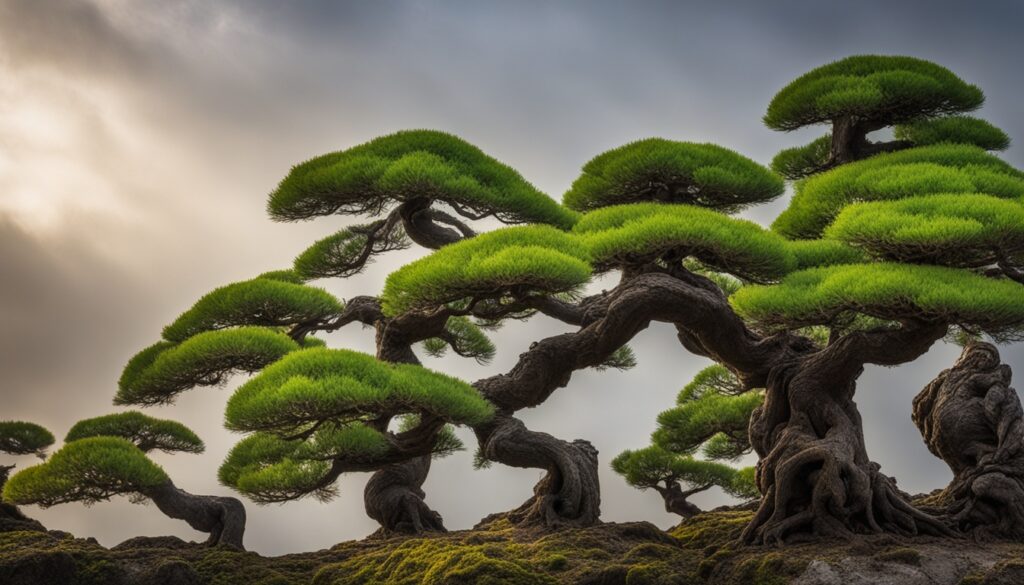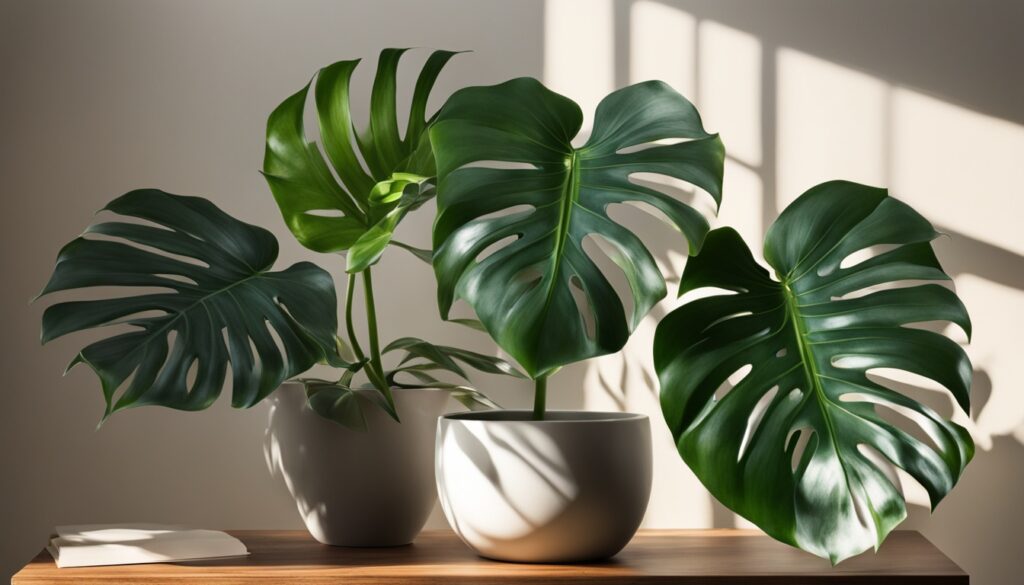In a serene Japanese garden, a small bonsai tree stood tall. Its trunk was gnarled, and its leaves were delicate. This tree was more than just a curiosity. It was a symbol of patience, dedication, and nature’s endless possibilities.
Bonsai trees are known for their beauty and long lives. They can live for hundreds, even thousands of years. These trees are small but mighty. Knowing what makes them live so long is key to caring for them.
Key Takeaways
- Bonsai trees can live for hundreds, even thousands of years with proper care and maintenance.
- Factors like species, environmental conditions, and cultivation practices play a vital role in bonsai longevity.
- Proper watering, pruning, fertilization, and disease management are essential for supporting the lifespan of bonsai trees.
- Certain bonsai species, such as conifers and some deciduous trees, are known for their exceptional longevity.
- Acquiring older bonsai specimens, such as those collected from the wild, can provide a head start in achieving remarkable lifespans.
Bonsai Tree Lifespan: An Introduction
The lifespan of bonsai trees shows how much care and skill their owners put in. These small wonders can live for centuries, much longer than regular trees. Some bonsai have even lived over 800 years, becoming true masterpieces.
What makes bonsai trees live so long? It’s all about careful care and attention. Owners water and prune them with precision. This helps bonsai trees, whether they have needles or shed leaves, live their best lives.
To make a bonsai tree last, you need to know a lot about its needs. The right care can make these trees live longer, so they can keep inspiring people for years.
“The true essence of bonsai is not found in the size of the tree, but in its enduring spirit and the unbreakable bond between the plant and its caretaker.”
Factors Affecting Bonsai Longevity
The life of bonsai trees shows the skill of their care. Things like the tree’s home and type are key. Bonsai trees can live a long with the right care. It’s important to know what they need to live long.
Environment
Bonsai trees need a special balance of conditions to thrive. Light, humidity, and temperature must be just right. For example, trees in cold places often live longer than those in warm areas. Some species, like Chinese elm and boxwood, can live up to 150 and 100 years, respectively.
Species
The type of bonsai tree also affects its lifespan. Trees like pines and junipers live longer than maples and cherries. Well-cared-for bonsai trees can last decades, with some living over a century. The Ficus Religiosa is the fastest-growing bonsai type and great for outdoor gardens.
“Some bonsai trees, especially coniferous varieties, have lifespans spanning multiple decades and even centuries.”
Knowing what bonsai trees need is key to their long life and health. By caring for each bonsai’s unique needs, fans can enjoy these art pieces for many years.
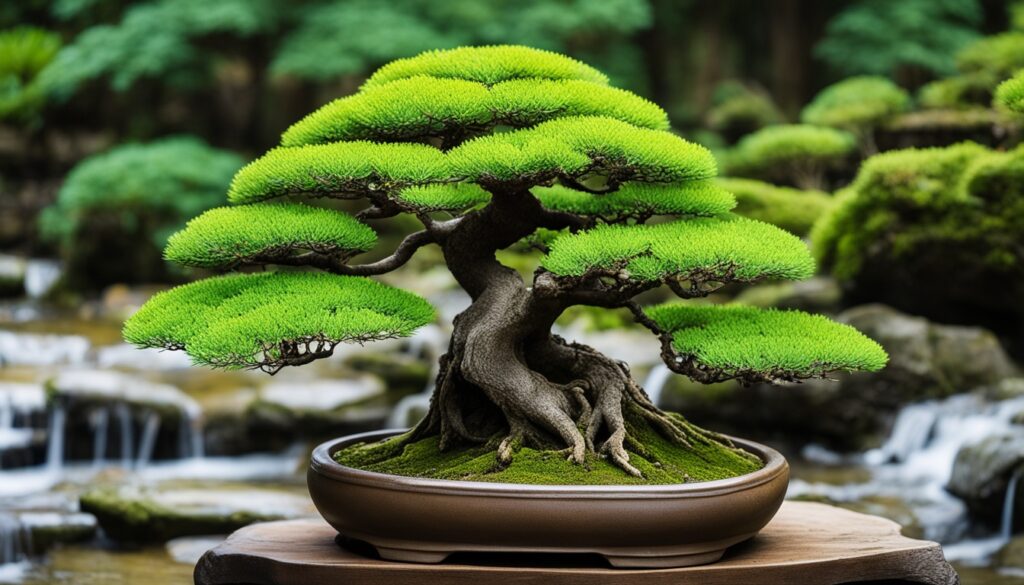
Nurturing an Aged Bonsai
As bonsai trees get older, they need special care. This includes things like repotting them carefully, pruning, and giving them the right amount of water and food. These steps are key to keeping them healthy and long-lived.
Proper Care Techniques
People who love bonsai know that older trees need special care. They must be treated with the care they deserve to live a long life. This means:
- Careful Repotting: Older bonsai need to be handled gently when repotted to protect their roots.
- Selective Pruning: Pruning should be done carefully to keep the tree’s shape and avoid stressing it.
- Tailored Watering: The way you water these trees must match their specific needs, considering things like the environment and soil type.
- Balanced Fertilization: Older bonsai need special fertilizers and ways to apply them to keep them healthy without giving them too much food.
Learning these caring for old bonsai and techniques for maintaining aged bonsai helps bonsai lovers keep their trees alive for many years. This way, they can enjoy their bonsai for generations.
“The key to long-term bonsai success lies in understanding how to encourage a plant’s growth without hindering its progress.”
Oldest Bonsai Trees in the World
Bonsai lovers are amazed by the long lives of these tiny trees. Some bonsai trees are over a thousand years old. One of the oldest is a Ficus Retusa Linn at the Crespi Bonsai Museum in Italy. It’s believed to be more than 1,000 years old.
Other famous oldest bonsai trees include the Sandai Shogun no Matsu, a 500-year-old Japanese five-needle pine. The Akao Garden has a 600-year-old Red Pine, known as the largest bonsai tree. The Shunkaen Nursery in Tokyo has two trees over 800 years old. The Mansei-en Nursery in Japan has a Juniper bonsai tree that’s over 1,000 years old.
These oldest bonsai trees show the skill and hard work of bonsai growers over the years. They highlight the beauty and art of growing miniature trees in Japan.
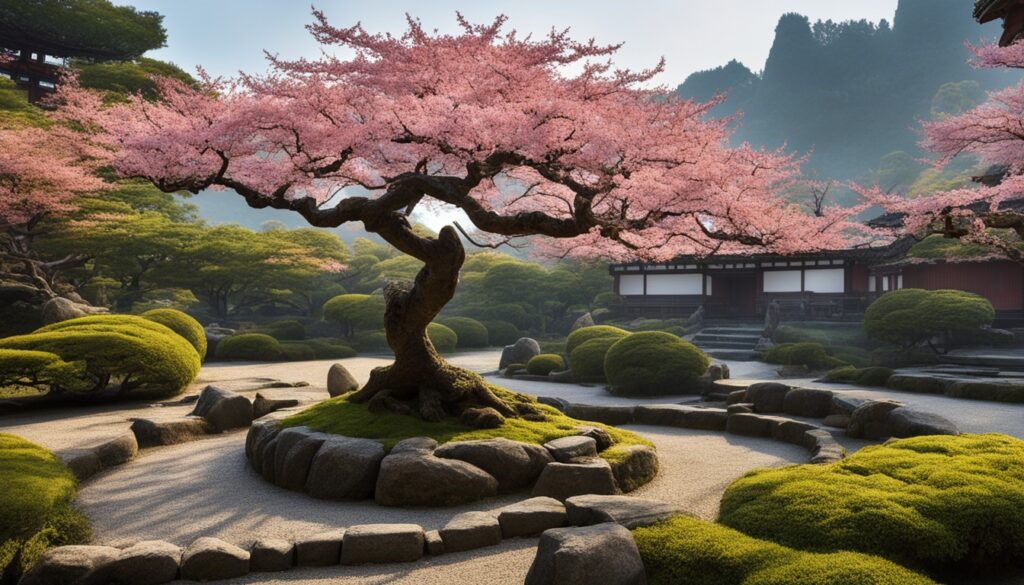
“The oldest bonsai tree in the world, the Ficus Retusa Linn, located in the Crespi Bonsai Museum in Italy, is estimated to be over 1,000 years old.”
How long do bonsai trees live?
Bonsai trees are not just beautiful; they can live for a very long time. Some can even live for centuries. The average bonsai tree lifespan depends on the type, its environment, and how well it is cared for.
Some bonsai trees live for decades, but many have lived for hundreds of years. These trees show how strong and adaptable bonsai plants can be. With the right care, bonsai trees can continue to amaze and inspire people for many generations.
“The value of a bonsai is determined by trunk size, branch structure, and aesthetic appeal rather than chronological age.”
Many think that older bonsai trees live longer, but that’s not always true. Skilled bonsai artists can make a tree look old in just 3-5 years. The real worth of a bonsai is in how it looks and its structure, not just how old it is.
Some bonsai trees, like the Japanese Black Pine and Corkbark Oak, grow old-looking bark quickly. This makes them look mature in a short time. But, they need special care to keep looking good.
On the other hand, trees like the Ficus can live for centuries with the right care. Others, like the Juniper, usually live about 50 years. The bonsai life expectancy shows how much effort and skill go into keeping these trees alive and thriving.
Revitalizing an Old Bonsai
Bonsai trees can lose their strength and health as they get older, especially if they stay in a pot too long. To bring an old bonsai back to life, experts move it to a bigger wooden box. This gives it more soil and nutrients.
This change in pot can really help revive older bonsai trees. It makes them healthier and more lively. The bond between the wood and soil is great for older bonsais.
Repotting into a Wooden Box
When moving an old bonsai to a bigger box, check its roots and condition first. This process, called bonsai container transition, lets the tree get more nutrients and moisture. It helps rejuvenate aged bonsai and encourages new growth.
- Gently remove the bonsai from its current pot, taking care to preserve the root structure.
- Inspect the roots and prune any damaged or diseased portions, ensuring the remaining roots are healthy.
- Select a suitable wooden box that is slightly larger than the bonsai’s current container, allowing for future growth.
- Fill the box with a well-draining bonsai soil mix, ensuring the tree is planted at the correct depth.
- Water the bonsai thoroughly to help it settle into its new environment.
By giving an old bonsai a bigger, more caring container, you can revive older bonsai trees. This lets these beautiful trees live longer and keep thriving.
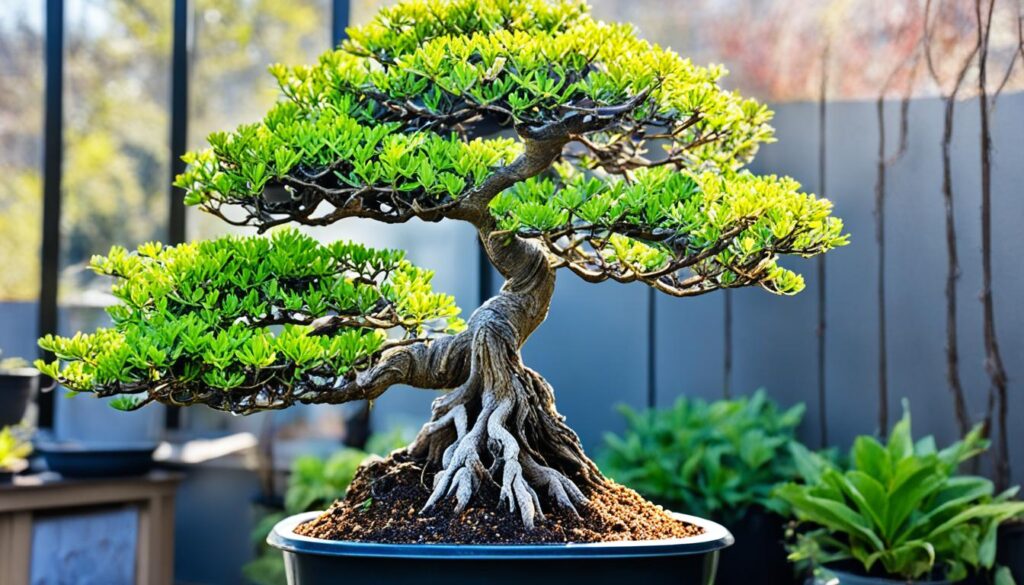
Bonsai Tree Origins
The art of bonsai tree cultivation has fascinated people for centuries. Each bonsai tells a unique story of where it came from. Some are grown from seeds, while others are found in the wild through “yamadori.” These wild bonsai are often hundreds of years old, with trunks and branches that show the beauty of time.
Cultivating from Seed
Growing a bonsai tree from seed is a long-term project. It takes patience and care to shape the tree from the start. While these bonsai may not look as old as those found in the wild, they can still live for many years with the right care.
Yamadori Collecting
Yamadori, or wild bonsai, are taken from nature and turned into art. They have unique, weathered looks that show how they survived in the wild. Collecting yamadori needs skill and respect for nature. It also requires knowing what the plant needs to live as a bonsai.
Bonsai trees, whether from seed or the wild, connect us to nature. Each one is a living piece of art that can last for generations. With the right care, these trees become treasured items that inspire and amaze everyone who sees them.
Caring for a Centenarian Bonsai
Maintaining century-old bonsai trees needs a special touch. These trees require careful watering, feeding, and trimming to stay healthy. Experts must know how to adjust their care to keep these trees alive.
Keeping these ancient bonsai alive shows the dedication of their owners. Techniques for preserving old bonsai include knowing the tree’s type, how it grows, and what it needs to live long. Every part of caring for these trees, from watering to pruning, is important.
“Bonsai trees symbolize balance, harmony, and simplicity in nature. Caring for them is described as nurturing in a profound sense, benefiting both the giver and the receiver.”
As these trees get older, their owners must keep a close eye on them. They need to change how they care for them to keep them around for others to see. The art of caring for ancient bonsai specimens shows how deeply connected we are to nature.
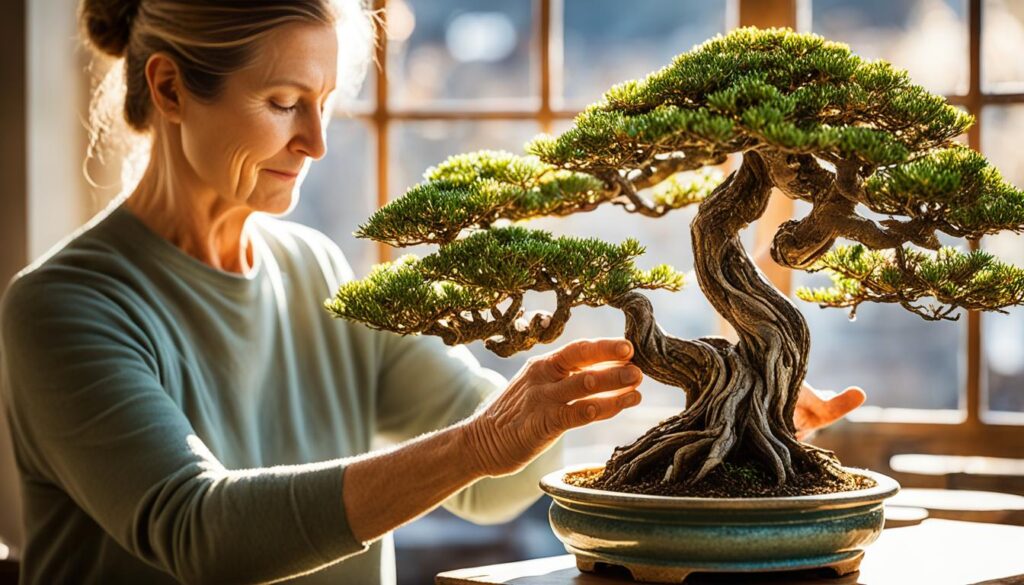
By understanding and respecting these trees’ needs, bonsai lovers can keep techniques for preserving old bonsai. This way, these symbols of patience, hard work, and caring for the earth can live on for many more years.
Achieving Bonsai Longevity
To make a bonsai tree last a long time, you need to care for it well. This means giving it the right amount of water and food. It also means cutting and shaping it carefully. By doing these things, bonsai lovers can make their trees last for many years, even centuries.
Watering and Fertilization
Watering your bonsai tree right is key to its long life. You need to think about the tree type, the soil it’s in, and where it lives. You should watch your tree closely and adjust how often you water it. Also, giving it the right food helps it grow strong and healthy.
Pruning and Styling
Pruning your bonsai tree at the right time is very important. It helps keep the tree looking good and healthy. It also helps the tree grow in a way that looks nice. Things like wiring and shaping help make the tree look just right.
“Achieving bonsai longevity is a delicate balance of art and science, requiring a deep understanding of the tree’s needs and a dedication to meticulous care.”
Learning how to water, feed, prune, and shape your bonsai tree is key. With these skills, bonsai lovers can make their trees last a long time. This way, they can keep enjoying and admiring their trees for many years.
Famous Long-Lived Bonsai Specimens
The world of bonsai is filled with celebrated ancient bonsai that have lived for centuries. They amaze both experts and regular people. These renowned old bonsai trees prove the skill and hard work of their owners. They have made sure these trees lived for many generations.
A standout is the Ficus bonsai tree in Italy, over 1,000 years old. In Japan, the Mansei-en nursery has a 1,000-year-old Juniper bonsai that has been loved for centuries. Another famous tree is the 800-year-old Japanese White Pine that made it through the Hiroshima atomic bomb. It shows how tough these bonsai with centuries-long histories can be.
“These famous bonsai are living testaments to the skill and dedication of their caretakers, who have ensured their continued survival for generations.”
These renowned old bonsai trees show the careful care they’ve gotten over the years. As they still amaze the world, they motivate bonsai lovers. They push them to be as dedicated and creative in their work.
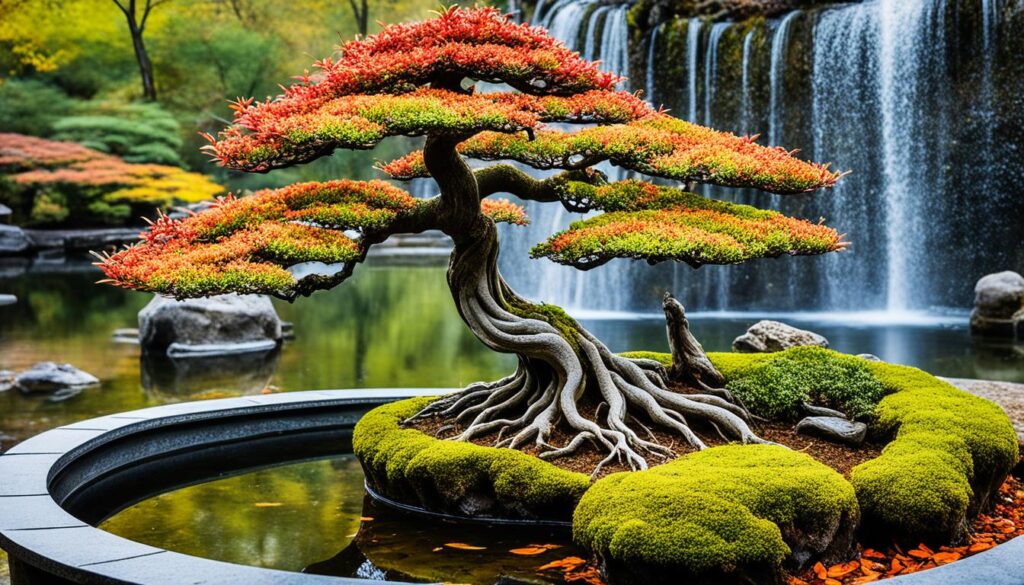
Bonsai Tree Life Expectancy by Species
The lifespan of a bonsai tree depends a lot on its type. Some types live much longer than others. For example, junipers and pines can live for thousands of years. Deciduous trees can also live for hundreds of years if taken care of properly.
Species like the Patagonian cypress, Sierra juniper, and African baobab are known for living a long time. They can live for centuries, both in the wild and as bonsai. To help them live so long, they need the right conditions and careful care throughout their lives.
Bonsai trees usually take 10 to 15 years to reach their full beauty. Their growth rates vary by species. For example, jade and wisteria grow slowly, about 2 to 5 inches a year. But Chinese elm and ficus can grow up to 36 inches a year.
The type of bonsai tree greatly affects its lifespan. Junipers can live about 50 years. Cypress bonsai can live for centuries. Pine and ficus bonsai trees can also live for hundreds of years if cared for well.
“With the right techniques and dedication, bonsai enthusiasts can nurture their trees to remarkable ages, preserving the beauty and artistry of these living masterpieces for generations to come.”
Knowing how long different bonsai trees can live helps enthusiasts choose the right species and plan for the future. This knowledge is key in growing and keeping these beautiful trees for a long time.
Overcoming Bonsai Growth Challenges
Bonsai trees need a lot of care to grow well. Pests and diseases are big challenges for those who love these tiny trees. They can hurt the health and life of these beautiful plants.
Dealing with Pests and Diseases
Many pests, like spider mites, can harm bonsai trees. Diseases, such as root rot, are also a big threat. Bonsai experts must watch their trees closely for any problems.
Knowing what your bonsai needs is key to keeping it healthy. Proper care techniques like watering, feeding, and controlling pests are vital. They help bonsai trees beat the bonsai growth obstacles they face.
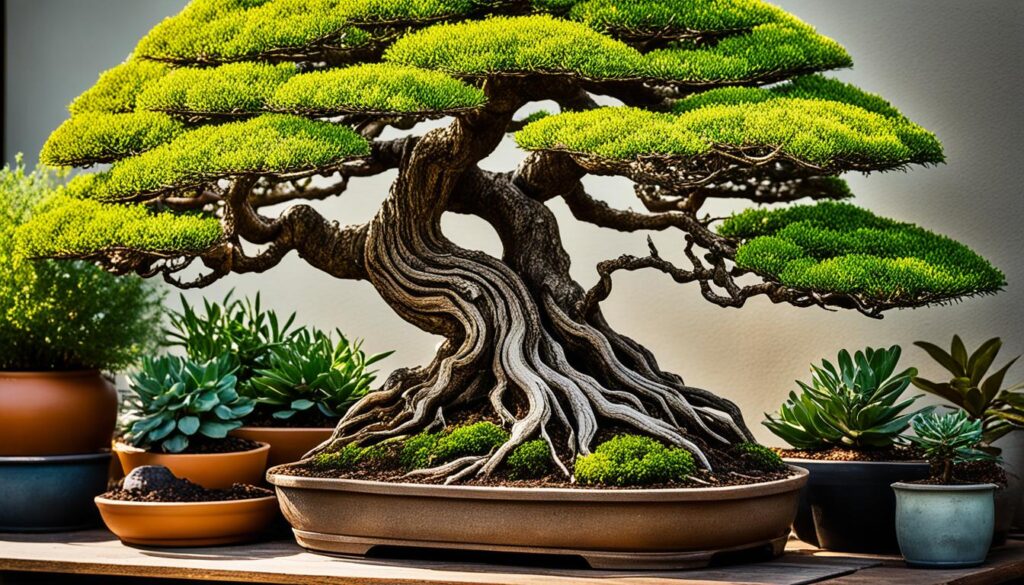
To succeed with bonsai, you need to understand each tree’s needs. With patience and careful attention, bonsai lovers can make their trees last for many years. They can overcome the challenges to bonsai longevity.
Passing Down Bonsai Legacies
Bonsai trees can live a long time, often outliving their owners. This lets them move from one generation to the next. Generational bonsai cultivation and preserving bonsai traditions are key to this art. Skilled bonsai lovers work hard to keep these tiny trees alive. They share their knowledge and bonsai tree inheritance, keeping the art’s history and culture alive.
The oldest bonsai, a Ficus tree in Crespi, Italy, is over 1,000 years old. The Red Pine Bonsai in Akao Herb and Garden is over 500 years old. The National Bonsai of Japan in the Tokyo Imperial Palace is 510 years old. These trees show how long bonsai can live with the right care.
“Bonsai trees can live for several decades, and some species can even thrive for up to 100 years, passing through generations.”
Some bonsai trees, like Japanese Maples and Chinese Elms, can live over 100 years. They need careful watering, repotting, and pruning to stay healthy. As they get older, they need expert care to keep them thriving.
By sharing their knowledge and trees, bonsai lovers keep this art alive. They make sure these beautiful trees continue to inspire and amaze people for years to come.
Conclusion
Bonsai trees live a long time because they are very resilient and adaptable. They can live for decades or even centuries with the right care. The right mix of species needs, environment, and care is key to their long life.
Thinking about the key takeaways on long-lived bonsai, we see they’re more than just pretty. They tell a story that connects past and future. With patience and skill, bonsai trees link generations, keeping the art alive.
The long life of bonsai shows the hard work and love of those who care for them. By knowing what bonsai need, fans can help them live long. These trees amaze people and inspire others to keep the tradition going.
